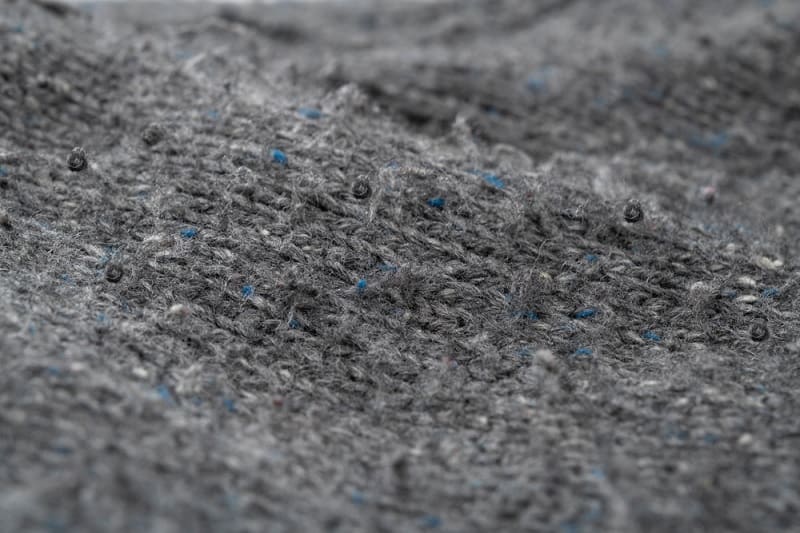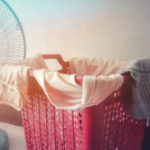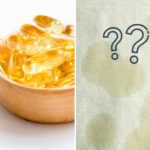Are your sweaters and jumpers covered in annoying little balls of fabric?
Those unsightly bobbles, often referred to as “pills” or “pilling,” can make your clothes look worn out and less appealing.
In this article, we’ll explore why clothes go bobbly and provide some tips on how to prevent and remove them, so you can keep your wardrobe looking fresh and new.
The fight against clothes going bobbly can seem like a losing battle, but if you understand what causes it you’ll have a better chance of preventing it.
If your clothes are already bobbly, there are some techniques you can use to de-bobble them and make them look new again.
Read on to understand what makes your clothes go bobbly and what to do about it.
Why Do Clothes Go Bobbly?
Bobbles form when the fibres in clothes become loose and tangle together into balls or clusters.
It’s easy to see how this can happen in the washing machine, since clothes are spun around at high speeds, so fibres can be ripped out of clothes and then tangle together.
There are often several factors at play which can lead to your clothes forming bobbles:
- Friction – When fibres rub together, either in the washing machine or while you’re wearing them, they are more likely to form bobbles. This is why you’re more likely to see bobbles under the arms, as this area of your clothes is subjected to more friction.
- Poor-quality or synthetic fibres – Clothes made from low-quality or synthetic fibres are more prone to pilling as they have shorter and weaker fibres.
- Washing and drying – Aggressive washing cycles, high temperatures, and tumbling in the dryer can cause the fibres to break and pill.
Are Some Materials More Affected?
Pilling can affect various types of fabrics, but some materials are more prone to developing bobbles than others.
Here are a few materials that tend to be more affected by pilling:
- Synthetic fabrics – Polyester, acrylic, and nylon are examples of synthetic fibres that are more likely to pill. These materials have shorter fibres that are less durable, making them more susceptible to friction and abrasion.
- Blends – Fabrics that are a combination of natural and synthetic fibres, such as cotton-polyester blends, may also be prone to pilling. The presence of synthetic fibres in the blend can increase the likelihood of bobbles forming.
- Knitted fabrics – Knitted garments, such as sweaters and scarves, are more susceptible to pilling due to the construction of the fabric. The loops in the knitted structure can easily catch and entangle, leading to the formation of pills.
- Loosely woven fabrics – Fabrics with a looser weave, such as flannel or brushed fabrics, can be more prone to pilling. The loose fibres are more likely to break and accumulate, resulting in bobbles on the surface.
The quality of the fabric also plays a role. Even though synthetic fibres are more likely to form bobbles, if they are high-quality they may be more resistant to pilling.
How to Prevent Clothes from Going Bobbly
Prevention is better than cure, so here are a few ways to prevent bobbles from forming on your clothes.
1. Minimise spin
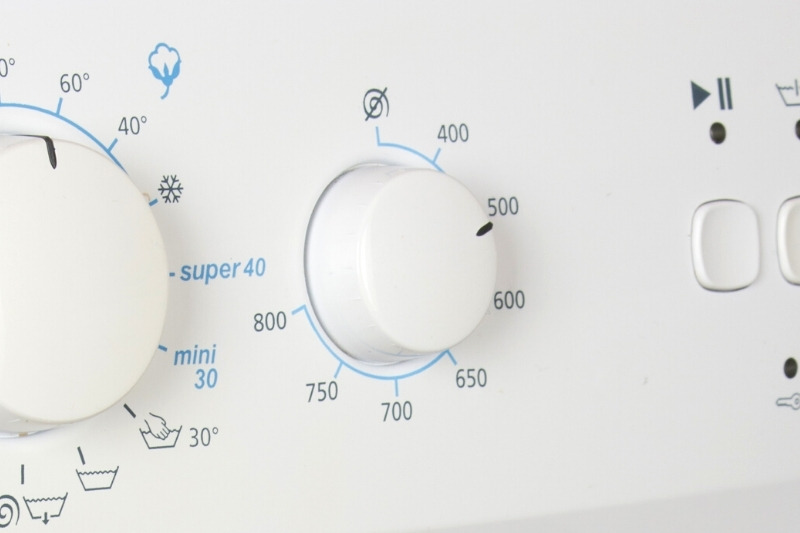
This is something which most politicians could also do with, but here we quite literally mean spin. By using shorter washing cycles with lower spin speeds, bobbles will be less likely to form on your clothes. Short and sweet is key.
2. Choose liquid detergents rather than powder
By opting for a liquid over a powdered detergent you give your garment a far smoother ride in the machine.
Whereas powdered detergents have to dissolve in the machine during the cycle (and almost certainly getting stuck in your fabric whilst this goes on) a liquid is already dissolved so cuts out the sheering effect of powdered dissolution. Keep it smooth!
Keep your gentle jumpers and smooth satin very much segregated from your damaging denim and other sturdy materials. If the mix they will rub together and gentle woollen garments are simply no match for the brutal Teflon of denim etc.
3. Don’t overload your washing machine

An overloaded washing machine means clothes can become trapped underneath other clothes which causes them to stretch and rub against one another creating friction. This, in turn, results in pilling on the fabric.
If clothes aren’t free to move in the drum, this could even cause existing bobbles to loop onto fibres in other clothes and create tangles and snags – ruining more of your wardrobe.
4. Hand-wash if you have time
If you have the time and commitment, then hand-washing your clothes is the gold standard of bobble immunisation.
If you buy a specially designed hand-wash detergent like Woolite and gently wash your clothes by hand, you should guarantee no bobbles will form during the wash process.
5. Avoid using the tumble dryer
Those two words “tumble” and “dryer” go against everything we have suggested in terms of “less spin” and “gentle smoothness”. The friction and blasting of heat in a tumble dryer is one way of guaranteeing yourself bobbles of the finest quality. Stay away at all costs!
Instead, air-dry clothes with a clothes airer or clothesline. Some garments such as wool jumpers should be dried flat to make sure they keep their shape.
6. Wash clothes inside out
Washing your clothes inside out is the equivalent of putting food in the freezer – it will buy you time.
If you’re noticing the initial signs of bobbling on your clothes, then them inside out in the future. This means that the bobble will take a lot longer to manifest itself, and better still, when it does it will be on the inside and out of sight.
A secret bobble is less shameful than an obvious one.
7. Check the care label and follow the instructions
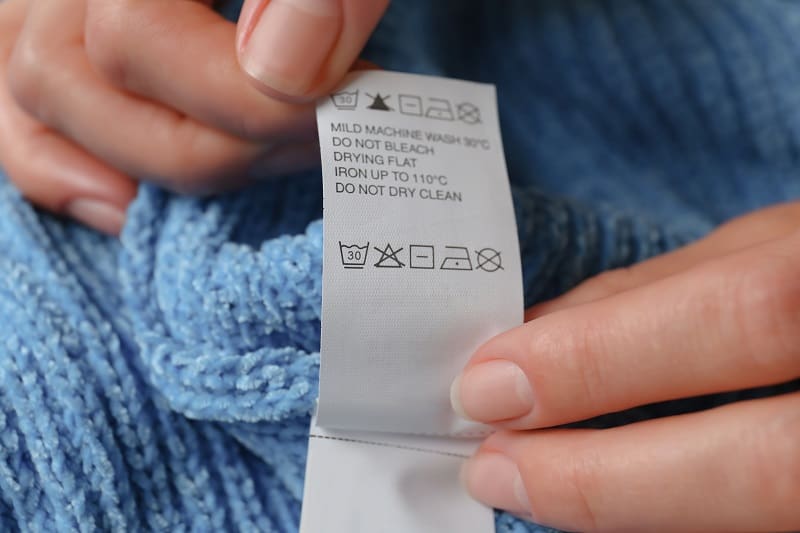
Almost all clothes have a care label, which tells you how to wash and dry it to prolong its lifespan.
It’s important to read the care label and follow the instructions if you want to protect your clothes in general, and prevent bobbles from forming.
Here are some things to look for:
- Washing instructions – Some clothes may require hand-washing or a specific wash cycle, while others may be suitable for machine washing. The care label should tell you if the garment needs to be treated especially carefully and not subjected to excessive friction.
- Temperature – The care label often specifies the recommended temperature range for washing and ironing the garment. High temperatures can weaken the fibres and increase the likelihood of pilling.
- Drying instructions – The care label may tell you that the garment shouldn’t be tumble dried, or should only be dried on a low heat. Heat and aggressive tumbling in the dryer can cause fibres to break and pill, so check the drying instructions before putting your clothes in the dryer.
- Fabric conditioner – Some care labels recommend against using fabric conditioner and other products.
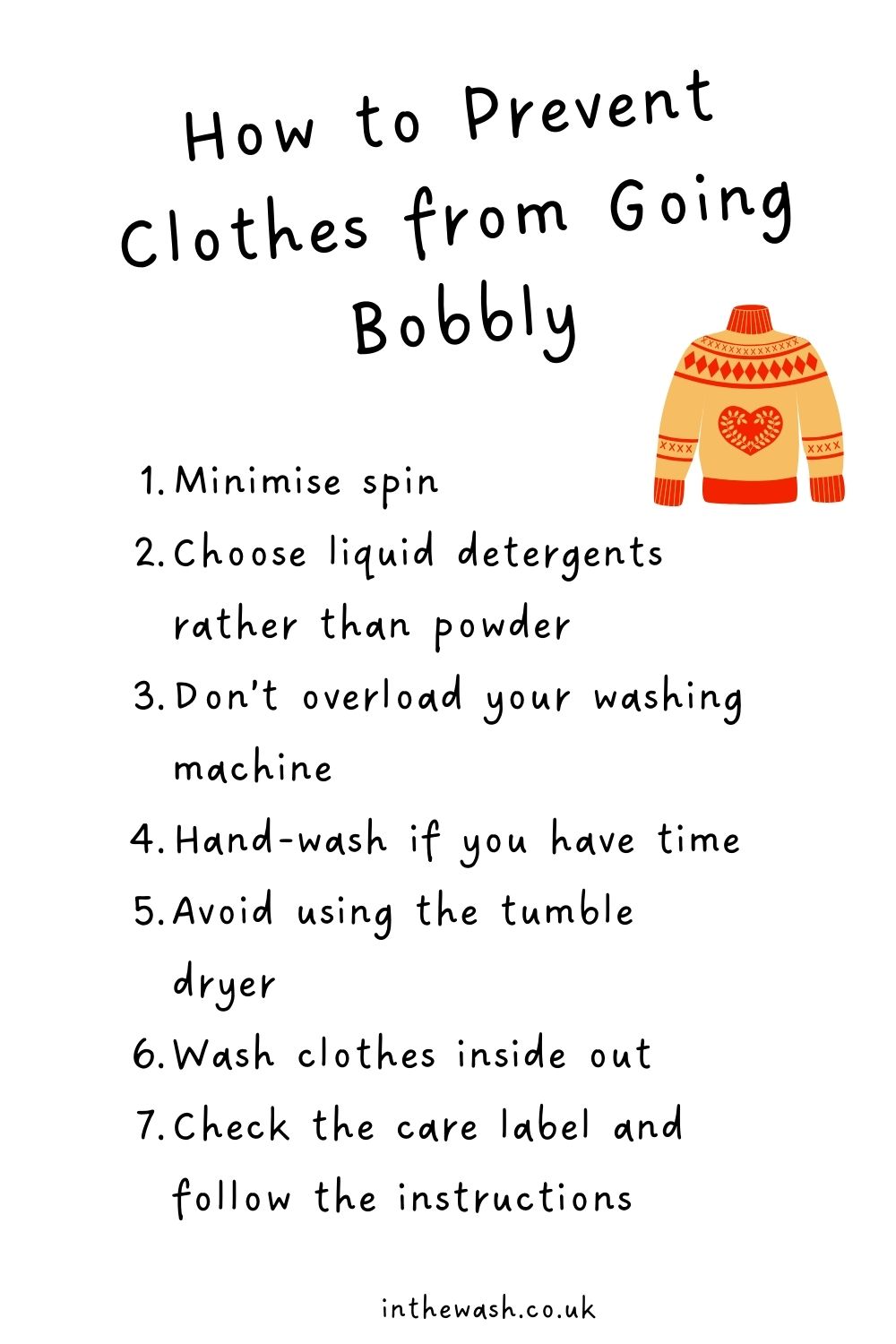
How to Remove Bobbles from Clothes
If your clothes already have bobbles on them, there are several methods you can use to get rid of them.
With all of these techniques, be careful and first test the de-pilling method on an inconspicuous, out-of-the-way area before treating more prominent bobbles.
If you’re not careful, some of these methods could damage your clothes, so you try them at your own risk!
1. Fabric shaver or razor
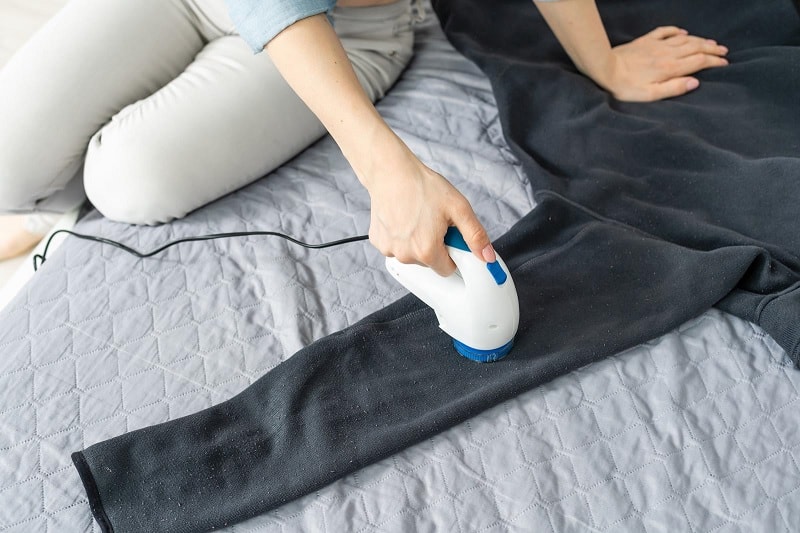
Use a fabric shaver (or a disposable shaving razor) and gently go over the affected areas.
By doing this GENTLY you can almost entirely remove the bobble and restore an almost new quality to the garment.
However, do this with caution as in the wrong hands this could likely make the area worse. Again, smooth and gentle are key.
2. Lint brush or roller

Lint brushes and rollers are designed to collect lint, fuzz, and bobbles from fabric surfaces, making your clothes look and feel smooth again.
They are particularly effective for clothes made from materials like wool, cotton, or fleece. However
They’re not always suitable for delicate or loosely woven fabrics, as they can snag or cause damage. A fabric shaver or sweater comb might be a better choice if you’re de-pilling delicate clothes.
3. Sweater comb
Sweater combs are a bit different to lint brushes. They can be a good tool to use on delicate woollen and cashmere clothes.
Hold the fabric taut and gently scrape the comb across the surface, using short strokes. The comb will catch and lift the bobbles, removing them from the fabric.
4. Scissors

If the bobbles are larger or more stubborn, you can carefully trim them off with a pair of small, sharp scissors. Hold the fabric taut and snip off the bobbles, being careful not to cut the fabric itself.
5. Velcro
Velcro can be surprisingly effective at removing bobbles from clothes, particularly on knitted fabrics.
Simply press the hook side of a Velcro strip against the fabric and lift it away. The hook loops will catch the bobbles, pulling them off the garment.
6. Duct tape
You can use duct tape or masking tape to remove bobbles. Wrap a strip of tape around your hand with the sticky side facing out, and then gently press it onto the fabric.
Lift the tape, and the bobbles should stick to it. Repeat the process until all the pills have been removed.
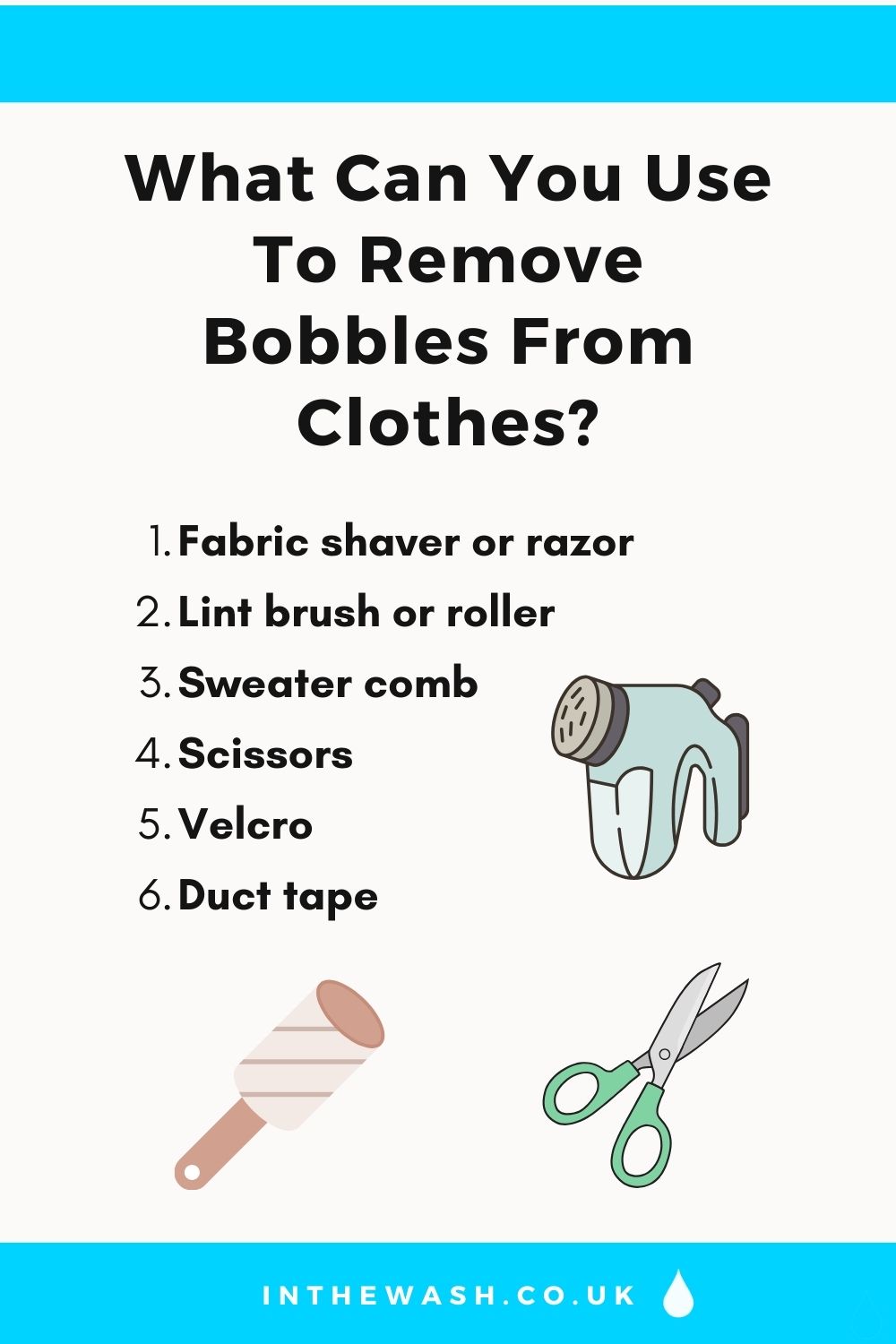
Can You Get Jumpers That Don’t Bobble?
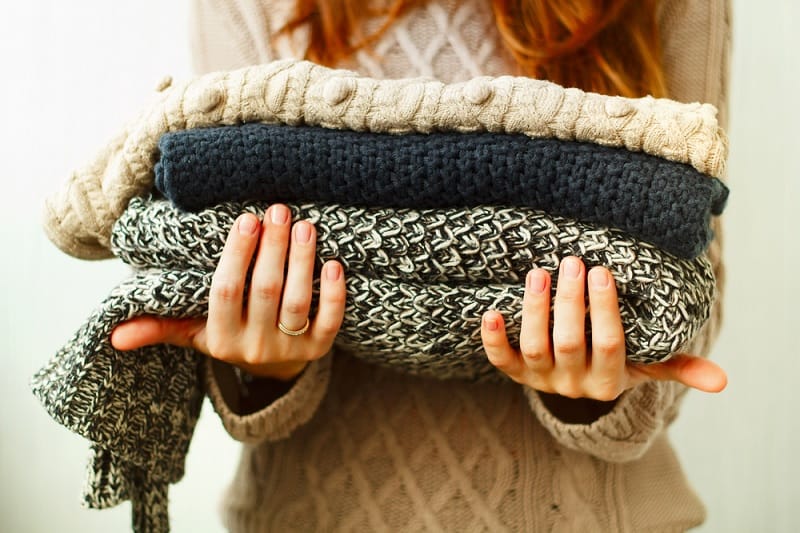
If you’re fed up with all of your jumpers getting bobbles, you might wonder if there are certain types of jumpers or sweaters you can buy that won’t suffer this fate.
If you’re jumper shopping and looking for something bobble-resistant, look for natural fibres like merino wool and cashmere. According to several sources, merino wool is the least likely material to pill because it’s so strong and tightly woven.
Natural fibres tend to be more resistant to pilling compared to synthetic fibres like acrylic or polyester.
You should also look for jumpers made from high-quality natural fibres or blends that incorporate a higher percentage of natural fibres.
As well as material, fabric quality is also important. Look for jumpers made from well-spun and tightly woven yarns. Higher-quality fabrics are less likely to shed loose fibres that contribute to pilling.
Also, jumpers with a tighter knit or weave are generally less prone to pilling. The closer the fibres are woven or knitted together, the less opportunity there is for them to break and form bobbles.
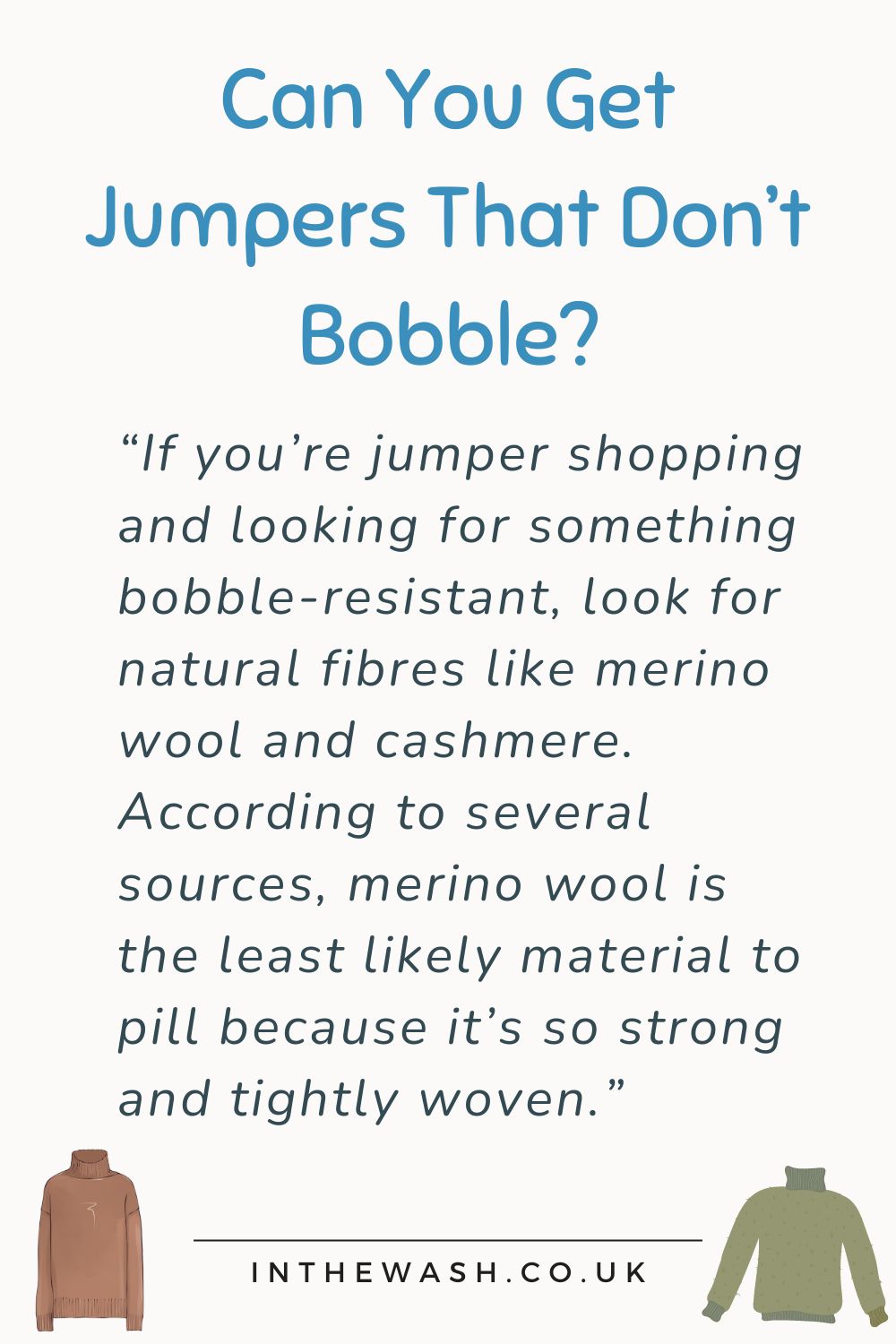

In The Wash is your guide to the best laundry and cleaning products, tips and tricks. Our mission is to solve the UK’s cleaning and laundry dilemmas!
